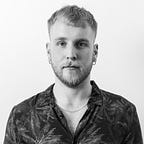Image-Making
Images have been playing a big part in our group’s research and design process. We used them when ideating within our initial Miro board, have continued to share more throughout the term and have all curated and created different images as a way of exploring ideas.
A keen photographer, I’ve always been interested in image-making. It was disappointing that government restrictions meant I couldn’t get out into London to capture parts of the city and explore ideas through photography. As an alternative, I came up with the idea of exploring London via Google Street View, taking screenshots of parts of the city relevant to the ideas we were exploring. As we’ve been thinking about how to reinvent town halls, we captured images of some around London. This helped to consider how the physicality of buildings within the city can give the impression of certain values. Most of the town halls we found seemed to be closed off and unwelcoming places and this gave us the idea of making them more transparent, local community hubs that people would want to visit.
After week three’s lecture on image-making, we also used Miro once again to explore images as a way of embellishing research questions and “opening up a process of enquiry,” as Alex put it. This led me to briefly research heterotopias — “certain cultural, institutional and discursive spaces that are somehow ‘other’: disturbing, intense, incompatible, contradictory or transforming” (Wikipedia) — as a possible means of “dark” design. In capturing images of town halls, I also began to wonder how these might be viewed as heterotopias. To me, the images certainly suggest they are intense buildings; some might say incompatible with their surroundings and purpose; and their look contradictory with the values they’re supposed to embody.
Johnathan’s approach was not just to curate imagery but create imagery to provoke thought, responding to our town hall Google Street View research by designing a 3D rendering for a completely transparent and interactive new town hall.
I too have been trying to open up space for enquiry by sharing images to further express concepts when presenting them to the group. This week, I presented an idea for an archive of human lives and experiences that could be accessed by others, perhaps in virtual reality, to try to elicit more empathy and understanding between people. I did so with found-images that expressed how the concept might play out and I think they helped the group to imagine this speculative future.
The idea was inspired by a science fiction book I’ve been reading by Becky Chambers called Record of a Spaceborn Few. In the book, humans, now mostly living on city-sized spaceships off-Earth, maintain what they call the Archives to remember those who came before them, the mistakes they made and life as it once was on Earth. Chambers writes, “If Humans deemed it worth remembering, the Archives kept it safe… That’s why we keep Archives, why we paint our hands on the wall. It’s so we don’t forget. We’re our own warning… We are a longstanding species with a very short memory. If we don’t keep record, we’ll make the same mistakes over and over.” Chambers’ novels are a form of speculative fiction and a commentary on current times. I’m interested in how the Archive might inspire our work around empathy. The words “worth remembering” also open up space to question how such a technology or service might lead to controversy around whose lives and experiences deserve archiving.
I’ve found that when trying to sketch ideas for this module, I too often fall into problem-solving mode. Alternatively, I found creating image composites more abstract and exploratory. Exploring the archive concept, I decided to consider what a classic library storing data instead of books might look like (see below and the header image). My limited image-manipulation skills wouldn’t allow me to devise anything realistic or concrete but instead, hopefully, opened up a process of enquiry once again.
I added the following images to this workbook entry following our mid-term crit. This was an experiment in image-making that involved mocking up social media posts that were going to be used in our mid-term crit (we didn’t end up using them because of time constraints). These were images made both as part of the process of enquiry and a design outcome.
They’re a storytelling device portraying the opening of the library. But they also prompt questions around how images, particularly via social media, can be used to convey a particular message controlled by the publisher. It’s easy to think images reflect reality but every image is framed by someone. And in choosing to include what they have within the frame — both literally and analogously — they’ve chosen not to include anything outside it. While we didn’t end up using them in our crit, they helped to solidify the archive concept in our minds as designers and continue to build our own story around it.
